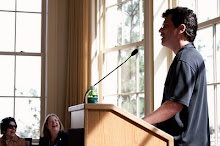As a follow to my post yesterday under the same Subject Line, if you enjoyed that one, you will enjoy these even more:
First I woke up today speculating that there might be a connection between the real life Elizabeth Tilney who was the daughter of Sir Frederick Tilney and the granddaughter of Isabel Thorp, and the very famous Edmund Tilney, Queen Elizabeth's Master of the Revels, who was portrayed by Simon Callow in Shakespeare in Love.
Here is Wikipedia detailing how the famous Edmund Tilney was the only son of Elizabeth Tilney's cousin:
"Edmund Tilney was the only son of Philip Tilney (d.1541), Usher of the Privy Chamber to King Henry VIII, and Malyn Chambre. Edmund Tilney's father, Philip, was a younger son of Sir Philip Tilney of Shelley (d.1533), treasurer during the Scottish wars under the command of the Duke of Norfolk. Norfolk's first wife was Sir Philip Tilney's cousin, Elizabeth Tilney; after Elizabeth died in 1547, Norfolk married Sir Philip Tilney's sister, Agnes, later Dowager Duchess of Norfolk."
Why should a Janeite care about these connections? Because the real life Edmund Tilney was not only QE1's Master of the Revels, he was also the author of _A Brief And Pleasaunt Discourse Of Duties in Mariage_, a lively male/female verbal joust about the rights of women in marriage, and their supposed duty of obedience. As I explained in my talk at the JASNA AGM in November, 2010, there is an unmistakable allusion to Edmund Tilney's famous Discourse in the witty and profound banter between Henry Tilney and Catherine Morland riffing on the metaphor between dance and marriage.
And as icing on the cake of this complex web of veiled historical and literary allusion in Northanger Abbey (which once again is shown, for all its apparent lightness, to be extremely dense with literary and historical allusions), here is one additional factoid that draws the web of allusion even more tightly.
Here is the essential poop on a real life _John de Thorp_ who was the great uncle of Isabel Thorp who married Sir Frederick Tilney. I found it in the 1844 book A supplement to The Suffolk traveller by Augustine Page & John Kirby:
P. 398: "The manor called Horham Thorpe Hall...was in the family of Thorpe, of Ashwell Thorp, in Norfolk. Robert Fitz John de Thorp, Baron of the Exchequer in the time of Henry III [sired] John de Thorpe_ [who] settled these manors...on Alice, his 2nd wife... Robert Fitz John de Thorp, their eldest son, died seized of Horham and Hoxne manors, in the 4th of Edward III; and John, son of Robert, held at his death, the 11th of that King, half the manor of Horham.... He, dying without issue, was succeeded by his brother, Edmund de Thorpe; who married Joan, daughter of Robert Baynard, and in 1380, made a settlement of these manors, and died in 1393. Joan, his widow, held them for her life; and on her death, in 1399, Sir Edmund de Thorpe, their eldest son, succeeded to the reversion of Horham cum Stradbrook, Wotton, and other manors, which were held for life by his brother Robert.
This Sir Edmund was killed in Normandy, and left by his wife, Joan, Lady Scales, two daughters, his co-heiresses; the [younger] Isabel, married to Philip Tilney, of Boston, Esq.; in whom, on failure of issue of Joan, the estate vested. From Frederick Tilney, Esq., their eldest son, they came, through his only daughter and heir, Elizabeth (married to Sir Humphrey Bouchier, Knt., and afterwards to Thomas, Duke of Norfolk), to Sir John Bouchier, Lord Berners...The mansion of Thorp Hall (now a farm house), and demesnes, are the property of...Alexander Donovan, Esq. ..."
Cheers, ARNIE
Popular Posts
- Deirdre Le Faye & Me: "I am a scholar, she is a scholar: so far we are equal"
- Darcy's "We neither of us perform to strangers": a Radical New Interpretation
- The Hunger Games’s Veiled Allusion to Shakespeare’s Titus Andronicus
- Rick Santorum would have been the worst person in the world to Jane Austen too!
- August Wayne Booth in Once Upon A Time: Jane Austen Really IS Everywhere in 2012!
- 20 shades of hero/villain Mr. Darcy
- Can Jane Austen forgive Marianne?
- Miss Bennet, Elizabeth, Lizzy, Eliza: who calls her what....and why
- The Great Gadsby: an overnight lesbian feminist ‘comedy’ sensation 10+ years in the making (& 3 millenia overdue)
- Austenland: The Movie was Fun, but the Novel was Better [SPOILER ALERT as to both]
Monday, March 28, 2011
Subscribe to:
Post Comments (Atom)

No comments:
Post a Comment